Looking Into Why The Red Wings Struggle To Hold The Lead
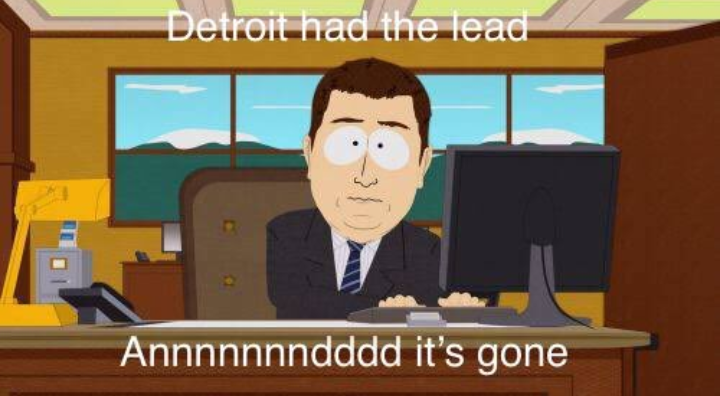
By Cameron Kuom
6 years agoAs Happy Gilmour once said, “YOU BLEW IT!!!”.

That pretty much sums up every Red Wings fan’s reaction following a blown lead that cost the team two points. It’s no secret the Wings can’t consistently maintain a lead, specifically in the third period, which is pretty evident with ten of their games going passed regulation. But why is that? Has it been just some bad luck? Poor execution of “the process”? Both? Let’s dive in.
To try and identify where they struggle most, I’ve separated the statistics by periods. At 5v5 when leading, they rank in the bottom half of the league for goals-for and goals-against in each individual period. The second period in particular is terrifying, ranking 27th in goals-for, and allowing the 10th most goals-against. Their CF% as a whole when leading by one goal, ranks 25th in the league (42.35%). Their lack of possession is allowing opposing teams more scoring changes, and allowing the opportunity for a comeback.
To try and identify where they struggle most, I’ve separated the statistics by periods. At 5v5 when leading, they rank in the bottom half of the league for goals-for and goals-against in each individual period. The second period in particular is terrifying, ranking 27th in goals-for, and allowing the 10th most goals-against. Their CF% as a whole when leading by one goal, ranks 25th in the league (42.35%). Their lack of possession is allowing opposing teams more scoring changes, and allowing the opportunity for a comeback.
Is there a reason they struggle in possession, when theoretically, they should have momentum when having the lead? Jeff Blashill’s game management may have something to do with it.
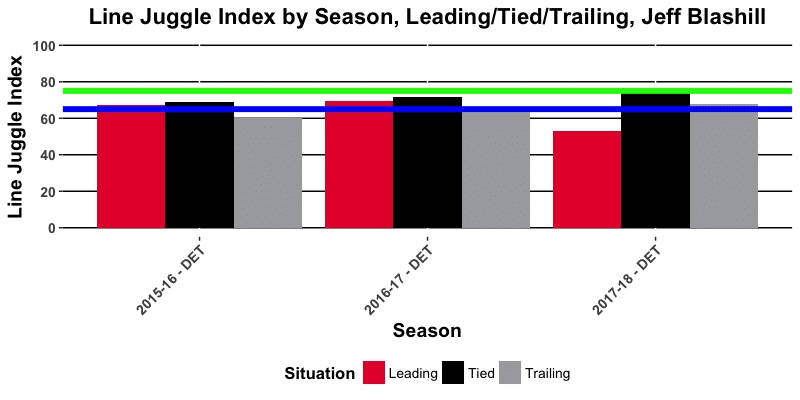
The Athletic’s Tyler Dellow found that Blashill is busting out the line blender more, when the team is leading, compared to when they are tied or trailing in 2017-18, with the Line Juggle Index (the lower the LJI, the more you juggle lines). It would make more sense to keep together what’s working, right? Let’s take a look, at how exactly he is distributing TOI, in leading situations, and see if it has a major impact.
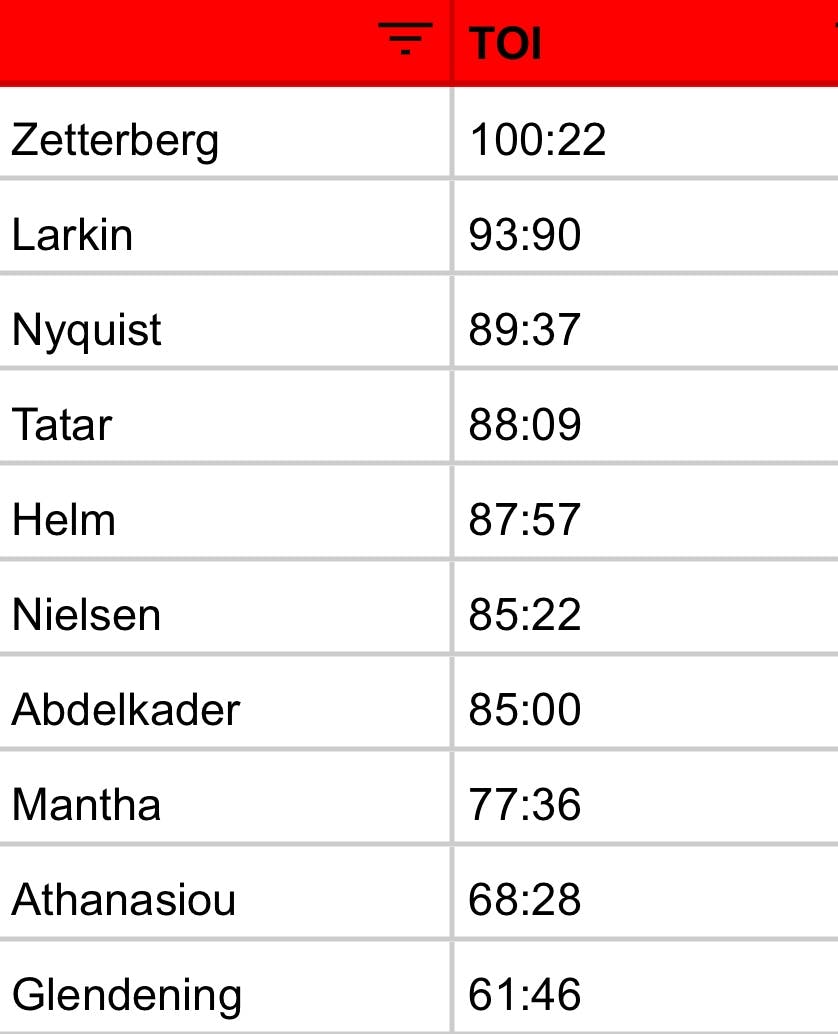
The above image is of Detroit’s leading forwards in TOI when leading at 5v5. Looking at the forwards specifically (because defensive pairings haven’t been subject to juggling to the same extent), seeing Helm, Nielsen, and Abdelkader hovering above 85:00 TOI, catches my eye. These three, have been used as a “shutdown line” as they are the three leading forwards on the Wings in TOI% against quality competition. But they haven’t fared well against teams’ best lines, as Abdelkader is the only one of the three with a positive CF% relative to his teammates (and its only at 0.25). This may allude to the fact that this line’s overuse is hurting the Wings ability to dominate possession.
There are two games I want to look into to justify their overuse playing as a factor. The first was the Wings December 13th matchup versus the Boston Bruins. The other was their matchup versus the Toronto Maple Leafs on December 15th.
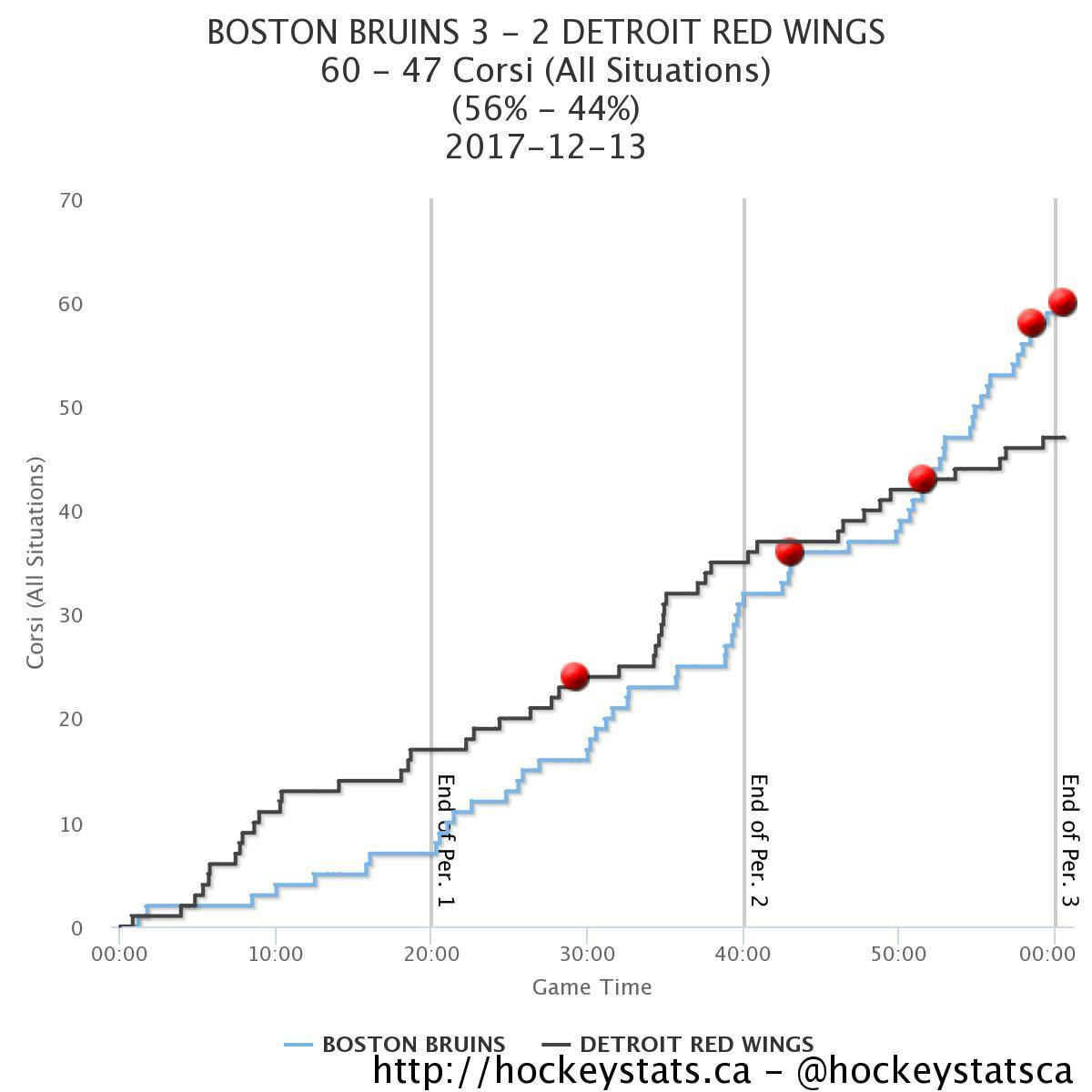
The Wings failed to control possession towards the end of this game. This also just so happens to be the same game that Helm and Nielsen lead all Detroit forwards in TOI. The Wings ended up blowing the third period lead and lost in OT.
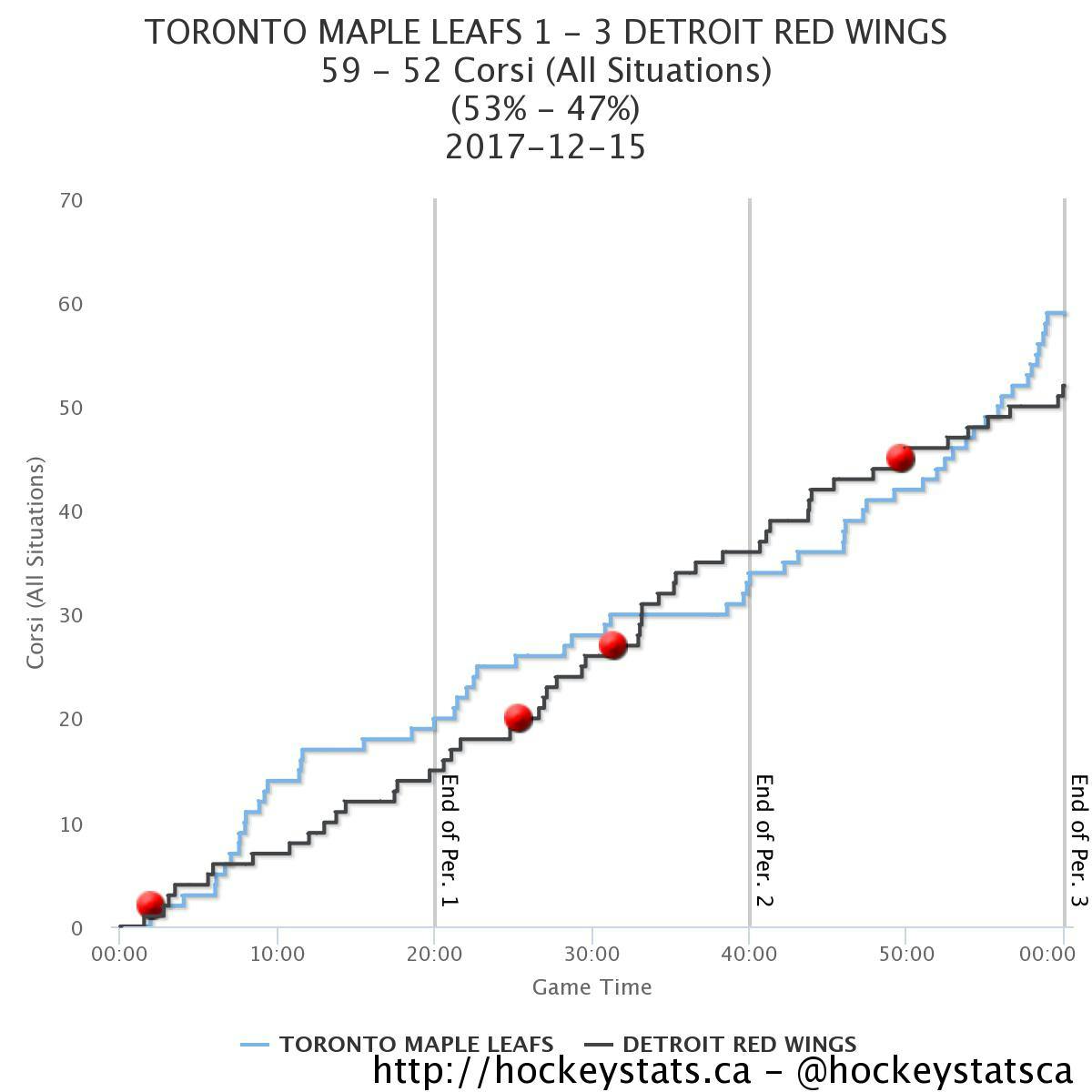
In this game, the Wings managed to win the possession battle for a large part of the third period (the Leafs pulling their goalie had an affect towards the end, turning it into a 6v5 situation), while having a one, and two goal lead. All three members of the Wings shutdown line played under 13 minutes. Detroit would hold onto the third period lead and win in regulation.
These should be taken with a grain of salt, as it is just two games out of forty-two, but it certainly is something. Blashill should consider to give this line less minutes, or spread out the offense, and look to dictate possession, rather than try to stop other teams’ best lines with an underperforming shutdown line. Spreading out the offense makes more sense. Detroit needs to generate more of an attack, as they rank 21st in the league in shots-for when leading by one goal.
Recent articles from Cameron Kuom





